CIHR 2023 to 2027 Departmental Sustainable Development Strategy
(Original Version - November 2023)
Table of Contents
- Section 1: Introduction to the Departmental Sustainable Development Strategy
- Section 2: Canadian Institutes of Health Research's Sustainable Development Vision
- Section 3: Listening to Canadians
- Section 4: Canadian Institutes of Health Research's Commitments
- Section 5: Integrating Sustainable Development
Section 1: Introduction to the Departmental Sustainable Development Strategy

The 2022 to 2026 Federal Sustainable Development Strategy (FSDS) presents the Government of Canada's sustainable development goals and targets, as required by the Federal Sustainable Development Act. This is the first FSDS to be framed using the 17 Sustainable Development Goals (SDGs) of the United Nations 2030 Agenda and provides a balanced view of the environmental, social, and economic dimensions of sustainable development.
In keeping with the purpose of the Act, to make decision-making related to sustainable development more transparent and accountable to Parliament, the Canadian Institutes of Health Research (CIHR) supports the goals laid out in the FSDS through the activities described in this Departmental Sustainable Development Strategy (DSDS).
The Federal Sustainable Development Act also sets out seven principles that must be considered in the development of the FSDS as well as DSDSs. These basic principles have been considered and incorporated in CIHR's DSDS. By doing so, CIHR promotes coordinated action on sustainable development. This departmental strategy integrates efforts to advance the implementation of Moving forward together: Canada's 2030 Agenda National Strategy, supported by the Global Indicator Framework (GIF) and the Canadian Indicator Framework (CIF) targets and indicators. The strategy also captures SDG initiatives that fall outside the scope of the FSDS to inform the development of Canada's Annual Report on the 2030 Agenda and the SDGs.
Section 2: Canadian Institutes of Health Research's Sustainable Development Vision
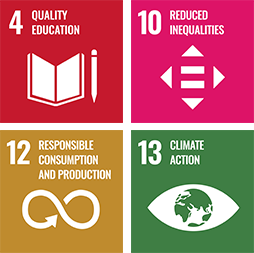
CIHR is committed to sustainable development by delivering on its vision to promote the best health for all Canadians, powered by outstanding research, across social, economic and environmental dimensions of health. By funding research excellence, CIHR supports the creation of new knowledge and its translation into improved health for Canadians, more effective health services and products, and a strengthened Canadian health care system. The work and impact of CIHR is advancing the Government of Canada's FSDS vision that Canada's economic, social, and environmental health is secure, and that our quality of life continues to improve.
In accordance with the Federal Sustainable Development Act, CIHR adheres to the principles of the 2022 to 2026 FSDS. CIHR recognizes that a healthier future that transcends generations cannot be achieved without embracing a sustainable development strategy. CIHR also recognizes that working with partners and the health research community is key to responding to the evolving needs for health research through its funding and achieving sustainable development goals. The CIHR Strategic Plan 2021–2031: A Vision for a Healthier Future is reinforcing this commitment by highlighting the need for an inclusive vision for health research that promotes equity, diversity, and inclusion throughout the Canadian health research enterprise and environmental determinants of health.
As Canada's federal health research funding agency, CIHR funds the research and knowledge mobilization needed to inform the evolution of Canadian health policy and regulation, while playing an advisory role on research and innovation issues. Through this essential contribution to the health research community, CIHR also supports the SDGs through four of the FSDS goals that reflect a vision for sustainable development in Canada.
Goal 4: Promote Knowledge and Skills for Sustainable Development
This goal supports inclusive and equitable quality education and the promotion of lifelong learning opportunities for all. CIHR contributes to this goal by funding research in health, environment and sustainable development that in turn supports research trainees and students. By developing and implementing funding opportunities in these priority areas, CIHR helps to ensure the pipeline of relevant skills and knowledge needed to understand and promote sustainable development is present in Canada. In addition, CIHR and its Tri-Agency partners – Natural Sciences and Engineering Research Council of Canada (NSERC) and the Social Sciences and Humanities Research Council of Canada (SSHRC) – collaborate on initiatives and funding invested in research related to the environment and sustainable development. This collaboration also addresses gaps in training and support across all career stages, transitions, and paths. This partnership prepares a diverse population of students and post-doctoral fellows for careers requiring strong research skills in all sectors of society.
Goal 10: Advance Reconciliation with Indigenous Peoples and Take Action on Inequality
The Government of Canada's goal is to move forward on reconciliation with First Nations, Inuit, and Métis communities. CIHR continues to contribute to this goal by its investments through the Action Plan: Building a healthier future for First Nations, Inuit and Métis Peoples. CIHR has worked very closely with Indigenous communities to co-develop major initiatives, such as the Network Environments for Indigenous Health Research, which focuses on building capacity for research and knowledge mobilization in Indigenous communities. Integrating equity, diversity, and inclusion (EDI) and Indigenous rights (IR) in CIHR programming supports poverty reduction, contributes to the health of all Canadians, and encourages sustainable economic growth. In collaboration with the International Development Research Centre (IDRC), CIHR is funding the Women Rise initiative to support action-oriented and gender-transformative research on how women's health and their work have been affected in the context of COVID-19. In addition, CIHR is funding the National Women's Health Research Initiative, which promotes an intersectional lens to research and care to tackle persistent gaps for all women, including Indigenous, Black and racialized women, women with disabilities, and members of Two-Spirit, lesbian, gay, bisexual, transgender, queer, intersex, and additional sexually and gender diverse (2SLGBTQI+) communities.
Goal 12: Reduce Waste and Transition to Zero-Emission Vehicles
The Government of Canada's procurement of goods and services will achieve net-zero emissions by 2050, to aid the transition to a net-zero, circular economy. One of the Government of Canada's goals is to promote public procurement practices that are sustainable, in accordance with national policies and priorities. In support of this goal and the Greening Government Strategy, CIHR is committed to procurement practices that are sustainable, in accordance with national policies and priorities. By increasing knowledge of sustainability among CIHR procurement officers and senior management, and by integrating environmental considerations into procurement management processes and controls, CIHR is supporting the goal of waste diversion targets.
Goal 13: Take Action on Climate Change and its Impacts
The Government of Canada is taking action to address climate change by setting pathways for Canada to reduce its domestic greenhouse gas (GHG) emissions and transition to a resilient, low carbon economy. In this context, CIHR recognizes that the physical, social, cultural, and built environments in which we live, work, and play are critical to our health, development, and wellbeing over the course of our lives. These environmental factors intersect and contribute both positively and negatively to our health and well-being. In support of this goal, CIHR has implemented targeted investments in health and climate change research in collaboration with stakeholders. In addition to these investments, CIHR is also moving forward with organizational actions that promote environmental sustainability, such as a hybrid workforce, and improved physical and digital spaces as a commitment to improving its climate resiliency.
For more information on CIHR's DSDS commitments and support, see the DSDS goals in section four of this report.
Section 3: Listening to Canadians
As required by the Federal Sustainable Development Act, CIHR has accounted for public consultation comments on the draft 2022–2026 FSDS. During the public consultation led by Environment and Climate Change Canada (ECCC), more than 700 comments were received from a broad range of stakeholders, including governments, Indigenous organizations, non-governmental organizations, academics, businesses, and individual Canadians in different age groups and of various backgrounds.
What We Heard
Certain examples of key priorities or suggestions for improvement identified during the consultations relate to CIHR's mandate. These include incorporating a distinctions-based approach when discussing Indigenous priorities and challenges while recognizing Indigenous self-governance; addressing socio-economic challenges such as inequity and inequality in funding health research; and supporting a just transition to sustainable jobs.
What We Did
CIHR is committed to continuing to strengthen Indigenous health research in Canada through impactful initiatives developed by and with Indigenous Peoples. CIHR recognizes First Nations, Inuit, and Métis Peoples' significant and ongoing contributions to research, as well as to our collective understanding of health and well-being. Guided by a spirit of reconciliation and co-existence, and a commitment to promoting optimal health, CIHR will prioritize the requirements needed for First Nations, Inuit, and Métis communities, including urban Indigenous populations, to strengthen Indigenous health research and knowledge mobilization. By listening attentively to and working with First Nations, Inuit, and Métis Peoples, CIHR embraces a distinctions-based and culturally safe approach to its sustainable development strategy.
CIHR continues to work with its Tri-Agency partners to identify and reduce administrative barriers that restrict access to research funding for Indigenous Peoples and in support of the Indigenous Health Research ecosystem with the Setting New Directions to support Indigenous research and research training in Canada 2019-2022 strategic plan. To guide the implementation of the strategic directions outlined in this plan, the Indigenous Leadership Circle in Research was created. This group will advise the Presidents of Canada's three federal research funding Agencies on matters related to Indigenous research and reconciliation.
CIHR continues to advance the self-determination of Indigenous Peoples in health research across the country. With dedicated funding granted to Inuit Tapiriit Kanatami (ITK) by CIHR, an Inuit Research Network to support Inuit-led research is being established. This will lead to solutions for the distinct issues and challenges faced by Inuit in Canada. Together with Indigenous Peoples, CIHR and partners will implement an interdisciplinary research and research training model that contributes to reconciliation. CIHR continues to acknowledge the significant and ongoing contributions of First Nations, Inuit, and Métis Peoples to research and continues to support Indigenous communities to lead health research founded in Indigenous ways of knowing, focusing on resilience and wellness.
Increasing the internal capacity and knowledge of Indigenous Health Research across the agency is one of CIHR's priorities in its commitment to reconciliation with Indigenous Peoples. This is evident in the increase of Indigenous employee representation, and continued requirements for distinctions-based training through the Canada School of Public Service for staff to incorporate cultural safety considerations and knowledge throughout the workplace.
CIHR is actively developing action plans to address systemic racism and systemic ableism in the health research funding system, in collaboration with communities impacted by racism and persons with disabilities, respectively, and promotes the integration of EDI related considerations in research design and practices. By applying gender-based analysis plus (GBA Plus) to the design of its programs, CIHR has extended paid parental leave allowances for students and post-doctoral candidates from 6 to 12 months. For the Project Grant Competition, CIHR increased the application page limit for research proposals submitted in French and routinely equalizes success rates for female applicants, early career researchers and French language applications. This increases the diversity of researchers accessing CIHR funding.
By implementing its Accessibility Plan, CIHR is committed to ensuring equal access and inclusivity for all individuals, regardless of their abilities. The plan encompasses a range of initiatives aimed at improving accessibility across various aspects of the organization, such as organizational culture, employment, communication materials, and design and delivery of programs and services. CIHR continues to monitor and evaluate the effectiveness of its accessibility plan with regular feedback mechanisms in place to capture input and address any emerging accessibility issues.
Finally, to support a just transition to sustainable jobs, CIHR supports early career researchers in a number of ways. For example, the CIHR Research Excellence, Diversity, and Independence (REDI) Early Career Transition Award aims to support the transition of post-doctoral researchers, clinical fellows, and research associates from specific underrepresented groups to faculty positions in academic, health system and research institutions in Canada.
Please find more information on the FSDS public consultation and its results in the FSDS Consultation Report.
Section 4: Canadian Institutes of Health Research's Commitments
Goal 4: Promote Knowledge and Skills for Sustainable Development
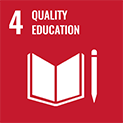
FSDS Context:
In support of this goal to promote knowledge and skills for sustainable development, CIHR invests in health research and training to support the creation of new knowledge and its translation into improved health for Canadians. The Agency has launched several initiatives in recent years with ongoing support for research and training in the environmental and sustainable development sector, including:
- The Environmental and Health Signature Initiative (EHSI) that aims to bring together information and understand how the environment contributes to health and disease across the life course; identify new methods to measure the environment and its effects and new ways to prevent or treat diseases caused by harmful environmental exposures; and improve overall health, health equity and quality of life. The EHSI is grounded in a nexus approach to signal the importance of interacting environmental exposures, and the need to examine cumulative exposures across the life course. A nexus approach highlights the interdependence of actions taken by multiple sectors and the necessity of cross-sector collaboration in tackling environmental problems.
- Two initiatives have been launched in support of the Government of Canada's Pan-Canadian Framework on Clean Growth and Climate Change, by funding environments and health research:
- The Food Security and Climate Change in the Canadian North Initiative supports research that will provide a deeper understanding of food security and climate change in the Canadian North, with a focus on Indigenous (i.e., First Nations, Inuit, and Métis) populations, and to support the development of effective approaches, programs, and policies to address the issue.
- The Research Network on Lyme Disease funding opportunity established a Network to generate new knowledge to improve the diagnosis and treatment of Lyme Disease in Canada. Given that changing climate and weather patterns affect the emergence and re-emergence of vector-borne diseases, including Lyme disease, the Research Network on Lyme Disease is well-positioned to contribute research evidence related to the health impacts of climate change.
- The Healthy Cities Research Initiative (HCRI) focuses on how urban environments have the potential to become engines of good health and health equity. Governments and communities can harness this potential by promoting physical activities, healthy eating, social connectivity, economic opportunity, and injury prevention as well as access to health services, clean air, nutritious food, and green space. The HCRI has the overarching goal of improving health in Canada by ensuring urban environments are maximizing their health-promoting potential and minimizing their harms. CIHR continues to support HCRI through a series of funding opportunities, grants and fellowships including the Healthy Cities Research Training Platform.
Implementation Strategy: Support youth skill development in environmental sectors
Departmental Action: Support students at every stage of study, help develop research skills and assist in the training of highly qualified personnel in environmental sectors
-
Programs
- Investigator-Initiated Research
- Training and Career Support
- Research in Priority Areas
-
Performance Indicator/Starting Point/Target
Performance indicator: Number of supported research trainees working on projects related to environment and/or sustainable development. Progress towards target is reported by fiscal years.
Starting point: Baseline based on average of the last three fiscal years of available data (from 2019 to 2022):
- IndirectFootnote * trainees – 76 per fiscal year
- DirectFootnote * trainees – 25.7 per fiscal year
Target: Maintain current level through to 2027Footnote *
-
How the departmental action contributes to the FSDS goal and target and, where applicable, to Canada's 2030 Agenda National Strategy and SDGs
This departmental action contributes to FSDS Goal 4 by funding research in health, environment and sustainable development that in turn supports research trainees and students. By preparing young Canadians for success in this high-growth sector, CIHR will contribute to increasing the number of STEM graduates in Canada.
Relevant targets or ambitions:
GIF Target:
- 4.4 By 2030, substantially increase the number of youth and adults who have relevant skills, including technical and vocational skills, for employment, decent jobs and entrepreneurship.
- 4.7 By 2030, ensure that all learners acquire the knowledge and skills needed to promote sustainable development, including, among others, through education for sustainable development and sustainable lifestyles, human rights, gender equality, promotion of a culture of peace and non-violence, global citizenship and appreciation of cultural diversity and of culture's contribution to sustainable development.
Implementation Strategy: Work with partners on sustainable development research initiatives
Departmental Action: Support team-led research projects on sustainable development
-
Programs
- Investigator-Initiated Research
- Training and Career Support
- Research in Priority Areas
-
Performance Indicator/Starting Point/Target
Performance indicator: Annual number of partners on research projects related to sustainable development.
Starting point: Baseline based on average of the last three fiscal years of available data (from 2019 to 2022):
- 7.7 Partners per fiscal year
Target: Maintain current level through to 2027Footnote *
-
How the departmental action contributes to the FSDS goal and target and, where applicable, to Canada's 2030 Agenda National Strategy and SDGs
This departmental action contributes to the FSDS Goal 4 by supporting environmental research by leveraging Canadian and international research partnerships and funds projects that address identified research gaps. This will in turn support increased research outputs and publications, thus increasing Canada's Average Relative Citation (target).
Relevant targets or ambitions:
GIF Target:
- 4.4 By 2030, substantially increase the number of youth and adults who have relevant skills, including technical and vocational skills, for employment, decent jobs and entrepreneurship.
- 4.7 By 2030, ensure that all learners acquire the knowledge and skills needed to promote sustainable development, including, among others, through education for sustainable development and sustainable lifestyles, human rights, gender equality, promotion of a culture of peace and non-violence, global citizenship and appreciation of cultural diversity and of culture's contribution.
Goal 10: Advance Reconciliation with Indigenous Peoples and Take Action on Inequality
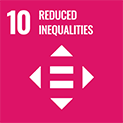
FSDS Context
As stated in CIHR's 2021–2031 Strategic Plan, achieving a more equitable, diverse, and inclusive Canadian research enterprise is essential to creating excellent, innovative, and impactful research necessary to advance knowledge and understanding, and respond to the local, national, and global sustainable development challenges. CIHR supports the Government of Canada's goal of advancing reconciliation with Indigenous Peoples and taking action to reduce inequality by removing systemic barriers to accessing research funding and embracing a diversity of perspectives to enhance the participation and retention of outstanding researchers from all under-represented groups. This ensures that we are capitalizing on the full extent of Canada's tremendous scientific talent.
CIHR remains committed to advancing Indigenous self-determination in health research and embedding Indigenous ways of knowing, learning and healing in its research programs. Through the Agency's priority to Accelerate the Self-Determination of Indigenous Peoples in Health Research toward a 10-year outcome, as established in the CIHR Strategic Plan 2021–2031, Indigenous communities will lead health research that focuses on resilience, wellness, and Indigenous Ways of Knowing, resulting in equitable health outcomes – something that has not been achieved in our lifetime. Results achieved from initiatives and directed grants contribute to the implementation of the 2030 Agenda and advancement of the SDGs. These are interlaced throughout CIHR's work engaging with Indigenous communities to build capacity for research and knowledge mobilization. Foundational community support is in the beginning stages operationalization and will promote well-being throughout the life cycle in relation to the health research ecosystem further advancing reconciliation with Indigenous Peoples.
In parallel, CIHR's Gender Equity Framework launched in 2016, aims to address gender equity challenges in funding competition success rates, amount of grant funding and the health research enterprise. This strategy contributes to advancing the CIF ambitions to achieve gender equality and empower all women and girls, as well as the GIF to end all forms of discrimination against all women and girls everywhere.
With NSERC and SSHRC, CIHR continues to establish equity, diversity and inclusion in the research system by delivering a variety of initiatives. For example, the Tri-Agency pilot funding opportunity EDI Institutional Capacity Building Grants was designed to support post-secondary research institutions to identify and eliminate systemic barriers that impede the career advancement, recruitment, and retention of underrepresented and/or disadvantaged groups, aligning CIF ambitions to ensure an inclusive and equitable quality education and promote lifelong learning opportunities for all.
The Tri-Agencies are also delivering new funding, stemming from Budget 2022, to support Black scholars at the undergraduate, masters, doctoral, and postdoctoral and post-health professional degree stages through existing scholarship and fellowship programs. This funding is contributing to strengthening the research capacity of Black scholars and enriching Canadian research and innovation.
In addition, in 2022 CIHR launched, the National Women's Health Research Initiative, a joint partnership with Women and Gender Equality Canada, which is advancing a coordinated research program to address under-researched and high-priority areas of women's and gender-diverse people's health and ensures new evidence improves women's and gender-diverse people's care and health outcomes.
Implementation Strategy: Implement the United Nations Declaration on the Rights of Indigenous Peoples Act
Departmental Action: Support research training and research into Indigenous health and/or research by Indigenous researchers
-
Programs
- Investigator-Initiated Research
- Training and Career Support
- Research in Priority Areas
-
Performance Indicator/Starting Point/Target
Performance indicator: Percentage of research investments in grants and awards addressing Indigenous health.
Starting point: 4.6% as of 2016
Target: Greater than or equal to 4.6% of CIHR's total annual Grants and Awards expenditures by 2027
-
How the departmental action contributes to the FSDS goal and target and, where applicable, to Canada's 2030 Agenda National Strategy and SDGs
This departmental action contributes to FSDS Goal 10 by supporting Indigenous communities to lead health research founded in Indigenous ways of knowing focused on resilience and wellness, and by establishing research environments that are socially spiritually, emotionally and physically safe for Indigenous Peoples as rights-holders.
Relevant targets or ambitions:
GIF Target:
- 10.3 Ensure equal opportunity and reduce inequalities of outcome, including by eliminating discriminatory laws, policies and practices and promoting appropriate legislation, policies and action in this regard.
Implementation strategies supporting the goal
This section is for implementation strategies that support the goal "Advance reconciliation with Indigenous Peoples and take action on inequality" but not a specific FSDS target.
Implementation Strategy: Invest in targeted scholarships
Departmental Action: Implement programming designed to benefit scholars from underrepresented groups
-
Program
Training and Career Support
-
Performance Indicator/Starting Point/Target
Performance indicators:
- Percentage of newly funded recipients who self-identify as women
- Percentage of newly funded recipients who self-identify as visible minorities
- Percentage of newly funded recipients who self-identify as Indigenous Peoples
- Percentage of newly funded recipients who self-identify as persons with disabilities
Starting point (in 2022–23):
- Percentage of newly funded recipients who self-identify as women – 45.2%
- Percentage of newly funded recipients who self-identify as visible minorities – 23.9%
- Percentage of newly funded recipients who self-identify as Indigenous Peoples – 1.3%
- Percentage of newly funded recipients who self-identify as persons with disabilities – 2.9%
Target (by 2027):
- Percentage of newly funded recipients who self-identify as women – 51.2%
- Percentage of newly funded recipients who self-identify as visible minorities – 29.1%
- Percentage of newly funded recipients who self-identify as Indigenous Peoples – 1.4%
- Percentage of newly funded recipients who self-identify as persons with disabilities – 3.6%
-
How the departmental action contributes to the FSDS goal and target and, where applicable, to Canada's 2030 Agenda National Strategy and SDGs
CIHR implements a variety of programs designed to contribute to the organization's equity, diversity and inclusion commitments, including the Research Excellence, Diversity and Independence (REDI) Early Career Transition Award, funding to support Black scholars, and support for early career researchers, women, Indigenous Health research and French applications as part of the Project Grant Program.
Relevant targets or ambitions:
GIF Target:
- 10.2 By 2030, empower and promote the social, economic and political inclusion of all, irrespective of age, sex, disability, race, ethnicity, origin, religion or economic or other status.
- 10.3 Ensure equal opportunity and reduce inequalities of outcome, including by eliminating discriminatory laws, policies and practices and promoting appropriate legislation, policies and action in this regard.
Goal 12: Reduce Waste and Transition to Zero-Emission Vehicles
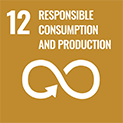
FSDS Context:
CIHR is supporting the Government of Canada's goal and the net-zero procurement target. CIHR is also supporting the goal of waste diversion targets by integrating environmental considerations into procurement management processes and controls, motivating suppliers to reduce the environmental impact of the goods and services they deliver and their supply chains, and ensuring that decision-makers, material management and procurement specialists have the necessary training and awareness to support green procurement.
Implementation Strategy: Strengthen green procurement criteria
Departmental Action: Include specific sustainability clauses in our tenders
-
Program
Internal Services
-
Performance Indicator/Starting Point/Target
Performance indicator: Percentage of competitive tenders that include specific sustainability clauses.
Starting point: 0% (new program) in 2023
Target: By 2027, 100% of competitive tenders include specific sustainability clauses
-
How the departmental action contributes to the FSDS goal and target and, where applicable, to Canada's 2030 Agenda National Strategy and SDGs
This departmental action contributes to the FSDS Goal 12 by supporting the promotion of public procurement practices that are sustainable, in accordance with national policies and priorities thus improving Canada's waste diversion targets.
Relevant targets or ambitions:
GIF targets:
- 12.6 Encourage companies, especially large and transnational companies, to adopt sustainable practices and to integrate sustainability information into their reporting cycle.
Departmental Action: Procurement specialists complete training on green procurement
-
Program
Internal Services
-
Performance Indicator/Starting Point/Target
Performance indicator: Percentage of procurement specialists that have completed green procurement training.
Starting point: 57% (4 procurement specialists) in 2023
Target: 100% (7 procurement specialists) by 2024
-
How the departmental action contributes to the FSDS goal and target and, where applicable, to Canada's 2030 Agenda National Strategy and SDGs
This departmental action increases knowledge of sustainable procurement practices among CIHR procurement officers.
Relevant targets or ambitions:
GIF targets:
- 12.7 Promote public procurement practices that are sustainable, in accordance with national policies and priorities.
Departmental Action: Include life cycle assessment and disposal in our internal processes
-
Program
Internal Services
-
Performance Indicator/Starting Point/Target
Performance indicator: Percentage of purchased goods for which an assessment of the lifecycle is done.
Starting point: 0% assessment (new program) in 2023
Target: 100% by 2027 all requests will be assessed
-
How the departmental action contributes to the FSDS goal and target and, where applicable, to Canada's 2030 Agenda National Strategy and SDGs
This departmental action improves internal procurement processes, so the life cycle of a product is taken into consideration.
Relevant targets or ambitions:
GIF targets:
- 12.5 By 2030, substantially reduce waste generation through prevention, reduction, recycling, and reuse.
Goal 13: Take Action on Climate Change and its Impacts
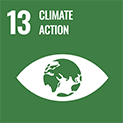
FSDS Context:
The Government of Canada recognizes that climate change affects the health of Canadians, especially the most at-risk populations such as youth, seniors, Indigenous populations, those with chronic health conditions, and marginalized low-income, and racialized communities. CIHR contributes to moving this goal forward through different funding initiatives such as the government's Pan-Canadian Framework on Clean Growth and Climate Change. Through this initiative, CIHR has implemented targeted investments in health and climate change. Operationally, CIHR is adopting innovative practices in line with the Government of Canada's Greening Government Strategy and its commitment to greener operations to achieve net-zero emissions and become climate-resilient. Through these measures, CIHR supports the Government of Canada's commitment to reduce GHG emissions by 2050 and ensure our processes, policies and programs reflect this commitment to the environment.
CIHR and its workforce are adopting a future workplace model that is flexible to balance organizational excellence and the wellness of our employees. With the opportunity to reimagine our work, CIHR has chosen a hybrid work model. Through this model, CIHR's workforce is embracing a modern, sustainable work culture that will allow for effective virtual core business as well as in-person collaborations. This is a work environment that is both socially and environmentally sustainable and is committed to more responsible business practices that reduce our carbon footprint and better steward our environment. Workforce innovations that encourage positive environmental practices include the implementation of the CIHR cloud strategy by end of 2023–24, migrating its application portfolio from its on-premises data centre to the cloud. In addition, CIHR is enhancing the use of virtual meeting and training spaces, continuing to offset the need for in-person and associated travel, that ultimately reduces negative environmental effects of its activities.
CIHR will be moving its office in 2025 in conjunction with the end of its current lease. Our workspace will be designed as per the Government of Canada Workplace standards, based on the seven dimensions of creating a flexible, healthy, efficient, inclusive, collaborative, green and technologically advanced digital space. The new location, which is compliant with accessibility standards, has received the Leadership in Energy and Environmental Design (LEED) Gold certification and is centrally located allowing employees to use public transportation. Onsite bike cages and showers encourage active transportation.
The hybrid model also allows CIHR to decrease office space, eliminate surplus items, and therefore reduce greenhouse gas emissions. In preparation for the move, CIHR has been recycling several tons of paper and actively participating in local waste diversion programs to responsibly dispose of surplus items while successfully diverting waste from landfills. This action, along with CIHR's other innovations, will increase the Agency's resilience of operations to the impacts of climate change.
Implementation Strategy: Implement the Greening Government Strategy through measures that reduce greenhouse gas emissions, improve climate resilience, and green the government's overall operations
Departmental Action: Eliminate physical recordsFootnote ** and offsite storage footprint through digitization, while adhering to responsible recycling and disposal methods
-
Program
Internal Services
-
Performance Indicator/Starting Point/Target
Performance indicator: Percentage of physical records digitized and disposed of.
Starting point: 62% of physical records digitized and disposed of in 2022–23
Target: 100% of physical records digitized and disposed of by 2027
-
How the departmental action contributes to the FSDS goal and target and, where applicable, to Canada's 2030 Agenda National Strategy and SDGs
This departmental action contributes to the FSDS Goal 13 by integrating measures to reduce paper consumption while eliminating storage footprint of physical records, and increasing the resilience of operations to impacts of climate change.
Relevant targets or ambitions:
CIF Ambition/Target: 13.1 Canadians reduce their greenhouse gas emissions.
CIF Indicator: 13.1.1 Greenhouse gas emissions
GIF Target: 13.2 Integrate climate change measures into national policies, strategies and planning
Section 5: Integrating Sustainable Development

CIHR will continue to ensure that its decision-making process includes consideration of FSDS goals and targets through its Strategic Environmental Assessment (SEA) process. The SEA is a tool used to incorporate environmental considerations into policy, plan or program proposals and includes an analysis of the impacts of the given proposal on the environment, including on FSDS goals and targets.
Public statements on the results of CIHR's assessments are made public when an initiative that has undergone a detailed SEA is announced on the CIHR Publication web page. CIHR commits to ensuring sustainable consumption and production patterns have been integrated when procuring goods. For example, an assessment of the life cycle and disposal of goods in an environmentally friendly manner will be made by the procurement specialists. This information will be captured by our internal processes and recommendations will then be made to our clients so that measures can be taken accordingly to promote sustainable development.
- Date modified: